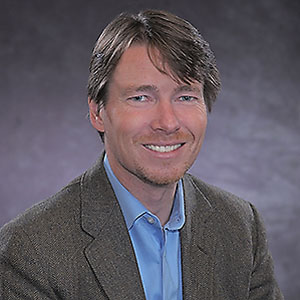Hurricanes, Wildfires and Heat Waves: Is Extreme Weather Our New Normal?
 To the Point provides insights from AU faculty experts on timely questions covering current events, politics, business, culture, science, health, sports, and more. Each week we ask one professor just one critical question about what’s on our minds.
To the Point provides insights from AU faculty experts on timely questions covering current events, politics, business, culture, science, health, sports, and more. Each week we ask one professor just one critical question about what’s on our minds.
Tropical storms in southern California. Once-in-a-century hurricanes in Florida. Heat waves baking large parts of North America. Canadian wildfires that blanket American cities with smoke and air pollution. Tornadoes ripping throughout the Midwest. Flooding in the desert. The list goes on. This year’s weather seems anything but normal. But given the realities of global climate change, are these events actually our new normal?
We asked AU Professor of Environmental Science Stephen MacAvoy our To the Point question of the week:
Should we expect extreme weather to be our new normal?
In a word, yes, with some caveats. In general, there will be increasing incidences of regionally extreme weather. The subtropical jet stream (a swift upper troposphere westerly wind in the northern hemisphere), is increasingly becoming more "wavey" with larger crests to the north and troughs to the south. This occurs because the polar regions are warming much more than the lower latitudes, decreasing the temperatures differences between the tropics and the poles, which normally would constrain the jet's meanders into tighter bands.
The larger crests associated with the “wavey” jet stream are allowing tropical air to shift northward in Western North America, which is why British Columbia had a string of record setting warm temperatures in 2021. Likewise, the troughs can drag cooler air from the arctic down the east side of North America, which is why Texas had a large freezing event the same year.
In addition to a dramatically ‘wavey” jet stream, the warmer temperatures are increasing the amount of water vapor in the atmosphere (itself a greenhouse gas), leading to increased rainfall totals and greater rainfall intensity on average in the United States. There are exceptions, such as Arizona and Hawaii (particularly Hawaii), but overall precipitation amounts and storm intensity will be increasing in the coming years.
At the same time, not all regions will experience the same types of odd weather, and we must remember that. Even if Texas is having a very cold winter, you can be sure that somewhere else will be experiencing extra warm conditions, and the global temperature will continue to rise on average. Part of the reason for Hawaii's horrible fires was winds associated with Hurricane Dora, which fanned the flames with 60+ mph winds.
2023 is an El Niño year during which the Pacific Ocean around the equator warms (El Niño happens every 4-11 years) and is associated with warmer temperatures in the Pacific and the US southwest. So, the prolonged heat waves this year in large parts of the west are driven by El Niño on top of the background warming from climate change. There are some people who think that climate change could increase the intensity of El Niño, but there isn't consensus on that, and its intensity has changed in the past without anthropogenic climate change driving it.
About the Author

Working in biogeochemistry and ecology, Professor Stephen MacAvoy has been particularly interested in how both nutrients and contaminants flow through, and are incorporated by, aquatic ecosystem components. Research and consulting activities have taken him to the Gulf of Mexico hydrocarbon seeps, Barbados, 11 USA States, and other locations. Professor MacAvoy obtained his PhD from the University of Virginia in 2000 and conducted post-doctoral work at the University of Georgia. He joined the faculty of American University in 2003 and became chair of the Department of Environmental Science in 2016. Recent publications have appeared in Applied Geochemistry, Environmental Science and Pollution Research, Ecological Engineering and Marine Mammal Science. He is currently conducting research on the inorganic and organic geochemistry of the Anacostia River in Washington, DC.
